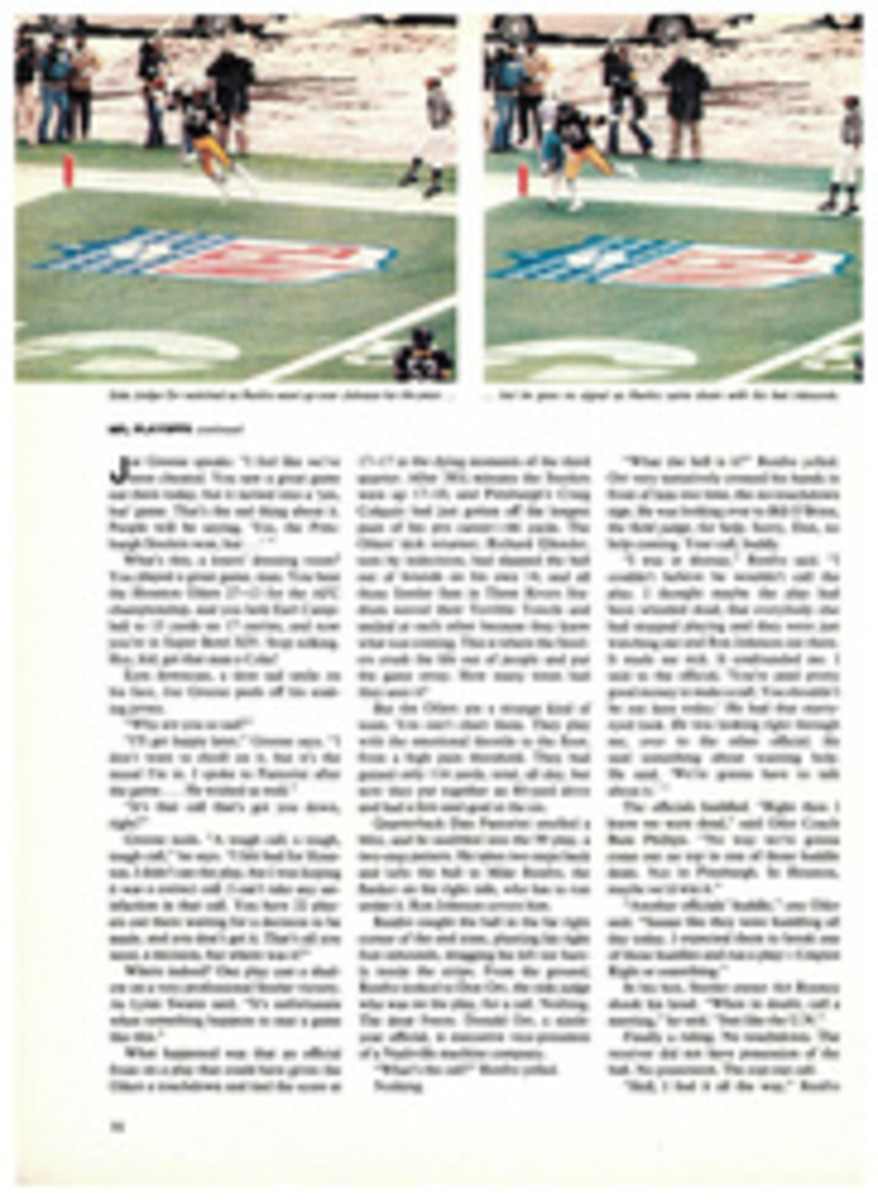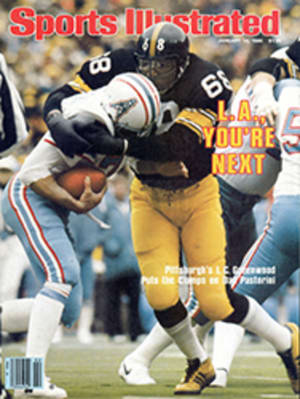
LEAVE THE CB AT THE DOOR, GOOD BUDDY
The first thing one notices when entering the grounds of Teletrack in New Haven, Conn. is a series of signs, affixed to the parking-lot tollbooths, declaring that CB radios are taboo. Thus the most expensive system of live closed-circuit television in this country, a betting facility heralded as "the world's first theater of racing," has effectively barred from a quasi-public facility a huge segment of today's society for crimes not only uncommitted but generally unimagined as well.
"Y'all cain't come in here, good buddy."
"Who say?"
"Teletrack say."
Built at a cost of $8 million and opened last October, the Teletrack complex is housed in a triple-tiered, drum-shaped building that has a seating capacity of 2,300, a dining room with an $8 minimum, concession stands selling Super Hot Dogs for $1.45, 40 betting windows and parking space for 850 cars. Utilizing microwave transmissions, Teletrack shows the complete thoroughbred racing card live from New York's Aqueduct track five afternoons a week, as well as the trotters and pacers from Yonkers Raceway six evenings a week, on a 24'-by-32' Hurley Super-glow screen and dozens of 17" TV sets. On the seventh day Teletrack rests.
When Teletrack commenced operations it drew flattering reviews from politicians, self-serving racetrack operators and off-track gambling officials, all cooing in chorus that it was "the future of racing." They consider it as a device for generating tax dollars in state after state. Others, however, view the advent of studio racing as the start of an ominous trend in the sport.
Teletrack is actually the prototype of a series of such buildings which, considering the woeful lack of leadership in racing and the weaknesses of the Federal Communications Commission, could, if unchecked, proliferate across the country. There is already talk of building a New York facility only 20 miles from Belmont Park, and rumors are rampant of similar plans in some parts of Florida. Connecticut—a state without racetracks, but with several jai-alai frontons—has four more proposed studio-racing sites.
Teletrack was built by General Instrument Corporation, one of the world's largest suppliers and manufacturers of cable television systems. It is also the parent company of Amtote, which provides two-thirds of the hardware for this country's $18 billion legal gaming operations. Even though this is a dreary time of the year for racing in the East, Teletrack has already had some daily handles of nearly $500,000.
The races programmed into Connecticut produce varying rights fees for various parties from the 17-cent bite taken, on the average, from every betting dollar. The distribution of that 17 cents seems outrageous. Under a contract signed in 1974 by General Instrument, the New York Racing Association and Connecticut, General Instrument receives 5.8 cents, Connecticut 7.6, New York State 1.1 and the New York Racing Association 1.9. Owners, trainers and jockeys—who, respectively, spend billions buying and breeding horses, work punishing hours breaking and training them, and put their lives on the line in perilous weather—receive nothing. Zilch.
It costs $4.20 to enter Teletrack's clubhouse and $2.40 for a seat in the grandstand. A patron not only sees the races live, but also watches post parades and gets two replays of each race. This is far less than one gets from the in-house TV sets at the tracks themselves, where taped interviews and notable races from the past are often shown as a matter of course. Clubhouse and grandstand prices at Aqueduct are $3.50 and $2; at Yonkers $3.25 and $2.
Teletrack occasionally throws something up on the screen to help the bettor pass time between trips to the windows, but only occasionally, and this material is of such small impact that one yawns. My favorite is a film called The Thoroughbreds, in which horses run around a racetrack with no voice-over, so the patron doesn't know the names of the horses, where the race was run or who the jockeys are.
The most glaring omission from Teletrack's "coverage" of the races is that the odds boards at Aqueduct and Yonkers are never shown to the bettors in New Haven. The reason is that the betting pools are completely different, with the payoffs in Connecticut based solely on the amount of money bet at the Teletrack windows in that state.
That is also the reason why CBs are taboo; General Instrument and the state of Connecticut fear that people will transmit odds variants between the two tracks and make a killing. Recently a winning $2 Triple ticket at Aqueduct paid $4,181; at Teletrack the same $2 Triple was worth $5,015.80, good buddy.
With politicians looking for tax dollars, one can foresee the day when there will be Teletracks in many states, the races probably emanating from New York, California and Florida, the big wheels of racing. What happens to the hundreds of other little tracks throughout the country, the small-time owners, the trainers, the jockeys learning their trades? Bang the drum slowly.
PHOTO
TELETRACK: THE START OF WHAT COULD BE SOMETHING BAD

